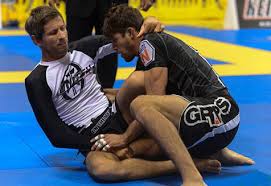The search to become safer, better, and more capable as a self-defender and as a human being is incredibly difficult. There are no easy steps or paths. It requires a lot of blood, sweat, tears, time, and money. One way that the path can be eased somewhat is to have mentors. But what does that mean?
The term Mentor comes from the Odyssey and it was a character who was Odysseus’ son’s teacher and advisor. He came to epitomize the concept of passing wisdom to someone younger and less experienced, but did it in a personal and direct way. A mentor is not just someone you learn from, especially if there is no contact with them. While we can learn many things from books and history and the words of those who came before us, a mentor is someone who takes an intense and direct interest in us. It might be for a narrow field, or it may be for life in general.
For example, I cannot begin to get across to people how important Theodore Roosevelt was to me growing up. It was reading about him and how he fought asthma that gave me the strength at 12 years old to undertake the same fight in an aggressive and dedicated way. Without that, it is highly doubtful if I would have accomplished most of the things I have done Martial Art wise in my life. But that does not mean he was a mentor. He was dead 40 some years before I was born. My life and my path in it was not something he could have ever taken a direct interest in. He was an inspiring hero, but he was not a mentor.
I would also argue that family and friends are not mentors. Them helping and aiding you is part of what makes family and is part of friendship.
Probably the key hallmark of mentorship is an active and continuous interaction between the mentor and the mentored. Being able to constantly ask questions and seek advice on a regular basis is how you navigate difficult waters, not just get a one-and-done answer.
I have been blessed to have had actual mentors. My BJJ professor, Megaton Dias, is a key one. His lessons (many of which were physically and emotionally painful!) have helped me more than I can express. Craig Douglas, while he is also one of my closest and dearest friends, is another one. Tom Givens has gone out of his way to offer much guidance as an instructor in general and a firearms instructor in particular. Countless others have offered help and thoughts along the way, and even if they have not been on-going mentors, they have certainly helped.
So make the effort to find a mentor, and to cultivate that relationship. It takes work, but it is worth every bit you put into it.

